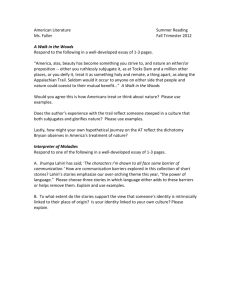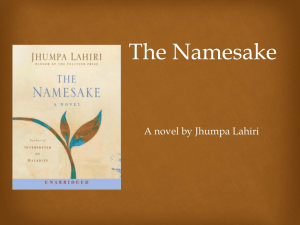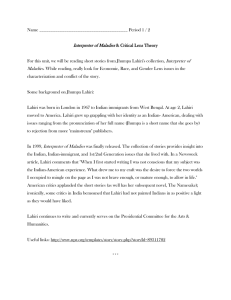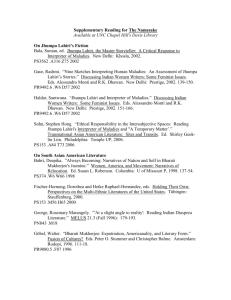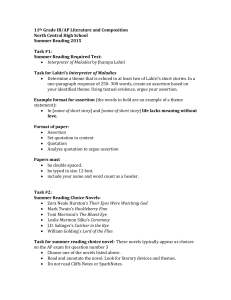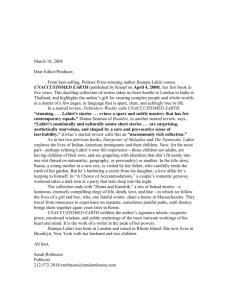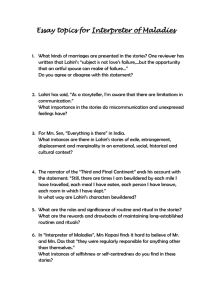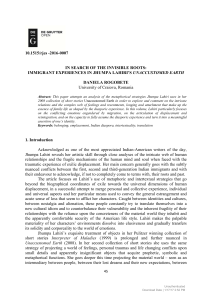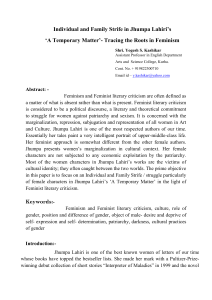context interpreter
advertisement
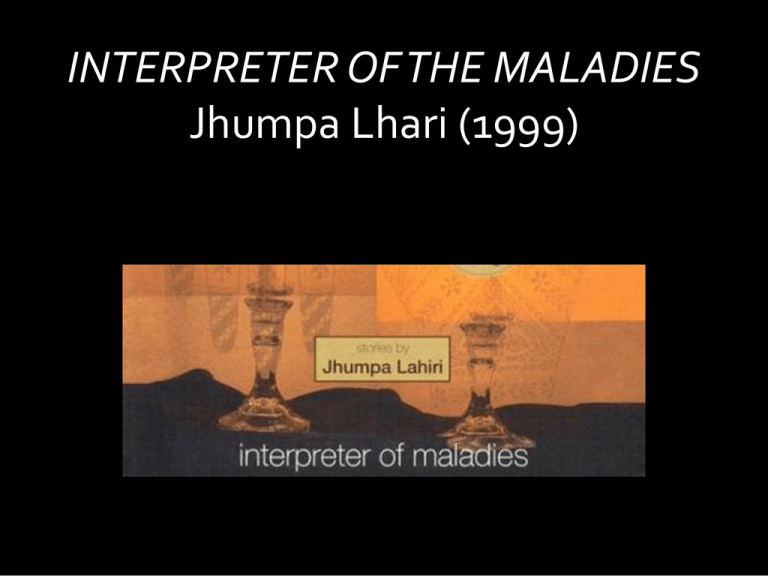
INTERPRETER OF THE MALADIES Jhumpa Lhari (1999) Historical background: The British Empire In the 19th Century the British Empire was the largest in the world The Partition of India in 1947 The Empire began to break apart in the 20th Century. Britain sliced up its vision of a united, multicultural India, into the countries we know today. The creation of new states and countries led to massive conflict. Following Independence form Britain and the partition of India in 1948 there was a huge movement of people, often based on religious lines. This lead to further conflict Indo-Pakistani War of 1971 This war was fought between India and Pakistan and was closely linked to the Bangladesh’s fight for independence. After months of violence and twelve days of war, East Pakistan separated from West Pakistan. East Pakistan became Bangladesh. The Caste system Poor Country Huge population Widespread homelessness Huge division between the “haves’ and the “have nots” The caste system dictates where people live and what jobs they can hold. Migration: a diaspora The diaspora that resulted from the conflict and poverty in India meant that many Indians found themselves living in countries such as Britain, Australia, Canada and the United States. THE AUTHOR Jhumpa Lahiri was born in 1967 in London, England, and moved to Rhode Island when she was 3. Her father and mother emigrated from Calcutta, India, and Lahiri spoke Bengali with them at home. CULTURAL CLASH Lahiri never felt fully American Her parents had a strong connection with India and the family travelled there several times. In addition, Lahiri was born in another country, SETTING Most of Lahiri’s work focuses on the lives of Indian Americans, and the stories in Interpreter of Maladies are set in India or parts of the United States, including Cambridge, Massachusetts, and an unnamed university town very much like Cambridge. India is a part of each story, although its influence varies in as it does in each character’s life. INDIAN AMERICANS Indians have immigrated to the United States in large numbers since the 1960s. Largely well educated and highly skilled, Indian immigrants come for a variety of reasons, but often to seek work in technological fields. Indian Americans now constitute the third-largest Asian American community in the United States. Central themes of “Interpreter of Maladies” include the difficulties that Indians have in relating to Americans and the ways in which Indian Americans are caught in the middle of two very different cultures. TASK: Write a paragraph explaining what you think some of these clashes might be? • INDIAN FAMILY LIFE TRADITIONS and CUSTOMS Each of the different stories trace the individual characters’ ability to adapt to a new culture and changing times.


